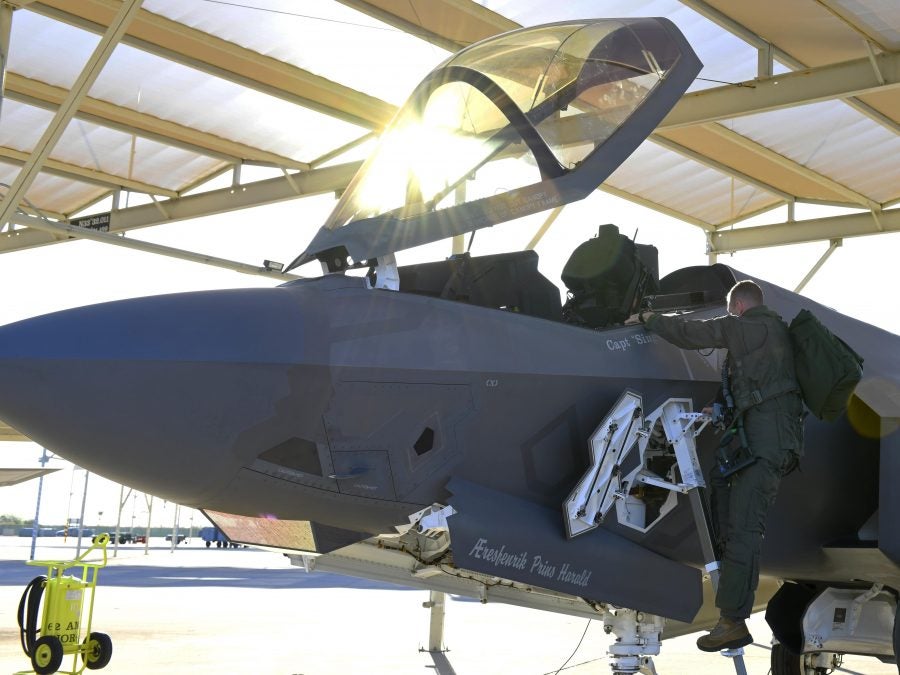
US and Norwegian student pilots train together to fly the F-35 as they take part in the aircraft’s first allied basic flight course.
The programme sees pilots beginning training in the T-6 Texan II aircraft and over eight months move up to flying the F-35.
The pilots are members of the 62nd Fighter Squadron (FS) based at Luke Air Force Base, Arizona. The squadron was activated as a joint effort between the US, Italy and Norway to train pilots in the F-35.
62nd FS squadron commander Lieutenant Colonel Christopher Hubbard said: “This is the first allied basic course ever in the F-35.
“Previously, only US pilots learned to fly the F-35 as their first fighter jet straight out of pilot training. Now, for the first time ever, Norwegian pilots are training right alongside American pilots in the F-35 B-course.”
Training to fly the F-35 includes flying smaller aircraft before an extensive classroom period where pilots familiarise themselves with the aircraft’s systems before moving to simulators and finally into the aircraft.

US Tariffs are shifting - will you react or anticipate?
Don’t let policy changes catch you off guard. Stay proactive with real-time data and expert analysis.
By GlobalData62nd FS fighter student pilot US Air Force (USAF) 1st Lieutenant Nathanael Zilllweger said: “The first flight was awesome; it’s interesting because in the simulator you can’t feel the jet at all. On your first flight, the jet rumbles a little bit so you get a feel for what it’s like to have 40,000 pounds of thrust at your back. That was probably the best thing for me.”
A Royal Norwegian Air Force fighter student pilot added: “When you do the first take-off after only flying aircraft in previous flights with smaller engines, you can really feel the kick of the aircraft accelerating on the runway. It was really fun to achieve the goal of flying a fighter jet for the first time.”
According to the USAF, the pilots who go through the course will participate in exercise Red Flag, an annual exercise where new pilots are tested in combat scenarios. Another focus is increasing interoperability between allied pilots.
Hubbard added: “This interoperability means that all F-35 partners are, or will be, training on the same airplane, using the same syllabus, operating off the same tactics manual and going through the same training pipeline.
“The benefits to this commonality are just starting to be seen, but will undoubtedly give allied combat efforts a huge advantage in future conflicts.”
The F-35 programme includes several allied partner nations buying into the aircraft’s three different variants with joint training allow partner nations to fly together and have a shared understanding of the aircraft’s capabilities.
Luke Air Force Base currently trains three-quarters of the world’s F-35 pilots, being home to 95 F-35A fighter jets; nations training at the base also include Australia, Singapore and the Netherlands.



